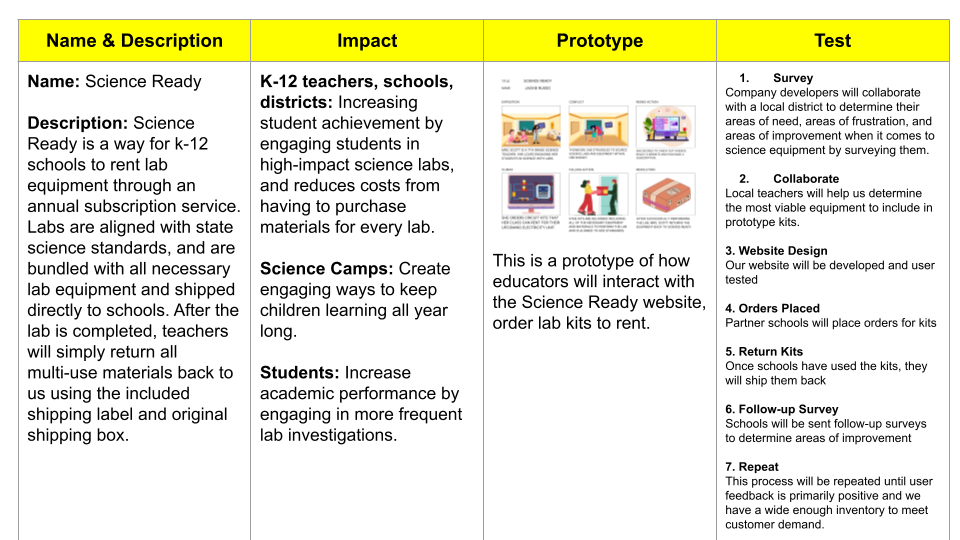Overview of Project and Design Thinking Process
I am thrilled to share my Educational Innovation and Technology project, which addresses the common obstacles that science teachers encounter in public schools. This business venture aims to provide a comprehensive and accessible platform for teachers, principals, superintendents, and science camp directors to enhance their students’ learning experience by renting all-inclusive lab kits. I utilized the design thinking process to create a comprehensive and accessible platform for science educators in public schools. The design thinking process consists of five stages: empathy, define, ideate, prototype, and test. In each stage, I applied a range of research and problem-solving techniques to ensure that the resulting platform would be human-centric. By using these methods, I was able to develop a venture plan that meets the needs of its users and has a positive impact on student learning outcomes.
My pitch, presentation slides, and business model canvas was well-received by professors, colleagues, and classmates, who saw the potential for this venture to revolutionize science education in public schools. Below you will find artifacts and explanations that outline how I utilized each step of the design thinking process in the development of this venture. Finally, you will find the pitch deck that I presented and its corresponding business model canvas. You are encouraged to explore the future of science education through these artifacts.
Empathy and Empathy Map Creation
In the empathy stage of the design thinking process, I focused on understanding the needs and preferences of various stakeholders in science education, including teachers, principals, superintendents, and students. To create an empathy map, I utilized my experience as a science teacher and conducted interviews with other middle school teachers to gain insights into their pain points and desires. Based on this research, I created an empathy map that visually represented the thoughts, feelings, and behaviors of a middle school science public education teacher. This empathy map can be seen below. Ideally, I would conduct interviews and provide surveys to each stakeholder group affected by this problem to ensure I understand the pain points and desires of each group and better develop this service.
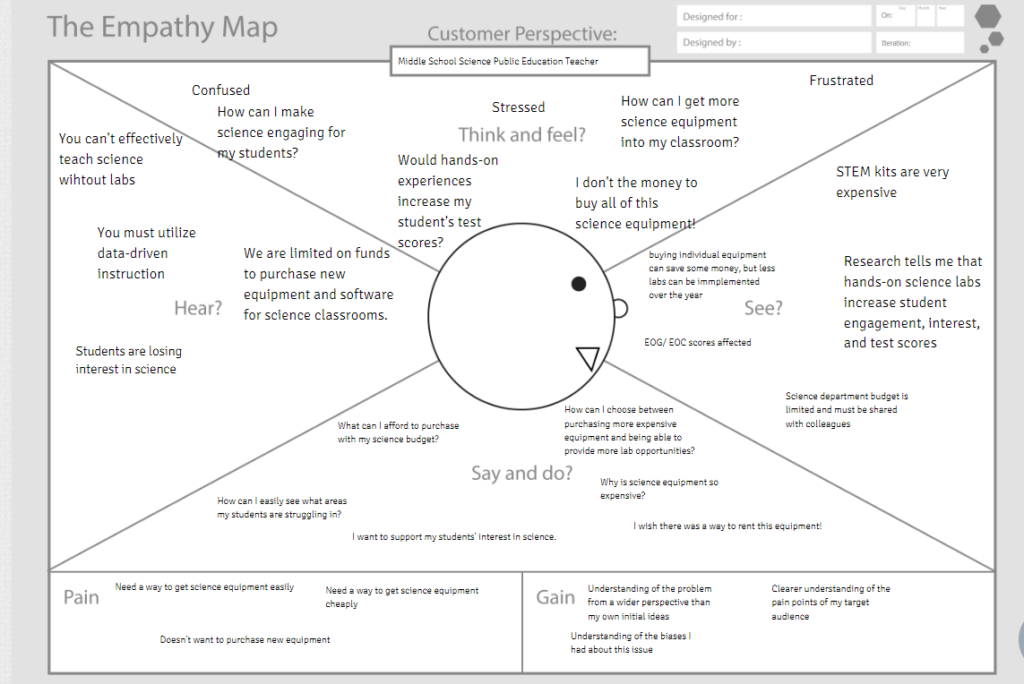
Define and Persona Creation
In the define stage of the design thinking process, I used the insights gathered from the empathy map and developed personas for each stakeholder, including a middle school student seeking engaging and interactive science lessons, a science camp director looking to inspire curiosity in young minds, a principal seeking to improve teacher performance and student achievement, a superintendent seeking to provide equitable access to high-quality science education, and a science teacher looking to engage students with diverse backgrounds and learning styles. By creating these personas, I was able to design a platform that caters to the unique needs and preferences of each stakeholder, ultimately leading to improved student learning outcomes and a cost-reduction solution to their problem. Below you find three of the personas that I created, and the other two can be found linked in my business model canvas at the bottom of this page.
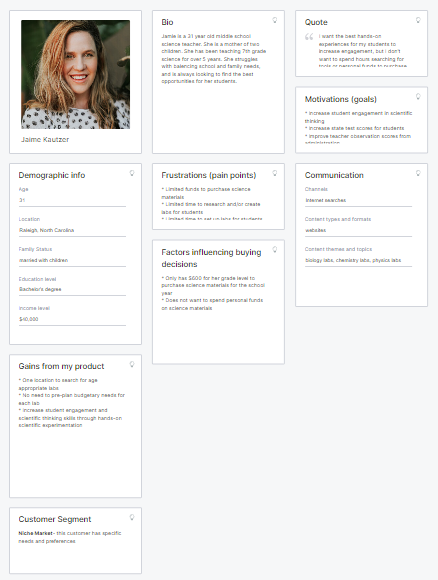
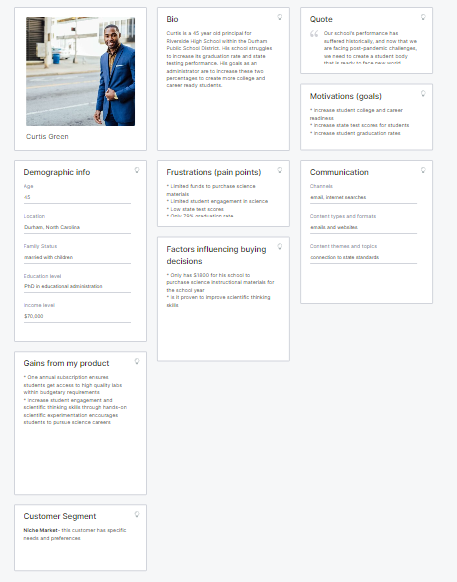
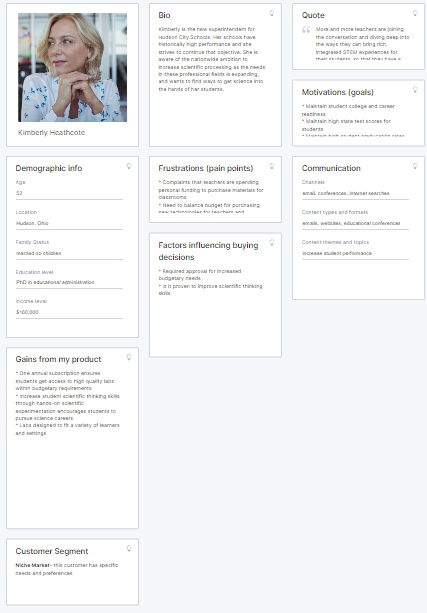
Ideate and Brainstorming Map Creation
The ideate stage of the design thinking process involves generating a wide range of ideas to solve the problem identified during the define stage. The wishing method is a brainstorming technique that encourages designers to think outside the box and generate creative ideas. I employed this method by coming up with wishes using the personas created during the define stage. I generated a wide range of ideas for the platform, which I organized into the brainstorming map shown below. This map helped to identify the connections between different ideas and stakeholders, allowing me to identify the most effective ideas to move forward with.
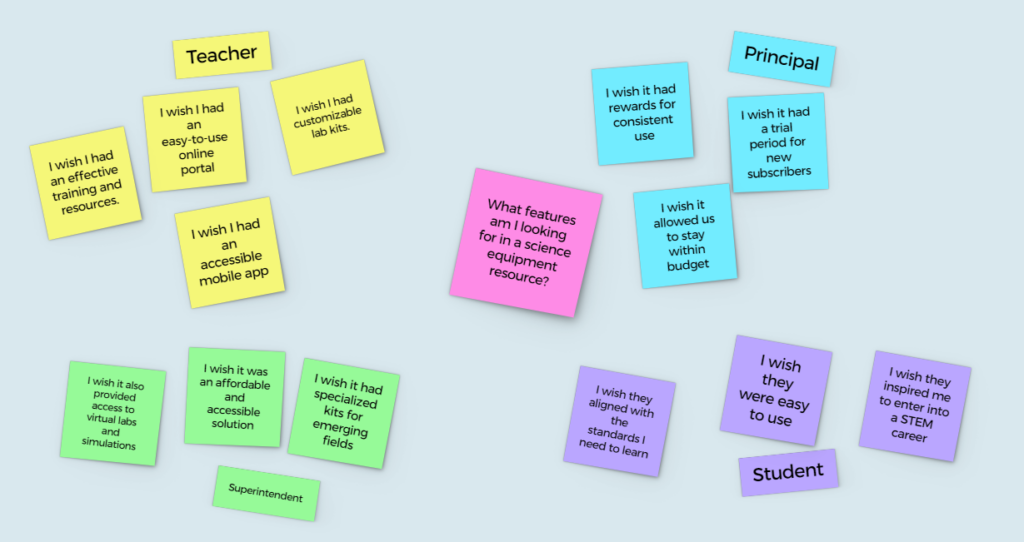
Prototype and Storyboard Creation
The prototype stage of the design thinking process involves creating a tangible representation of the solution to the problem identified during the ideate stage. Storyboarding is a technique that helps to visually represent the solution in action. By creating an example science class scenario that highlighted the various features and functions of the platform, I was able to create an outlined prototype for the platform. The storyboard shown below would allow stakeholders and investors to see the platform in action and provide a tangible representation of how it would benefit users.
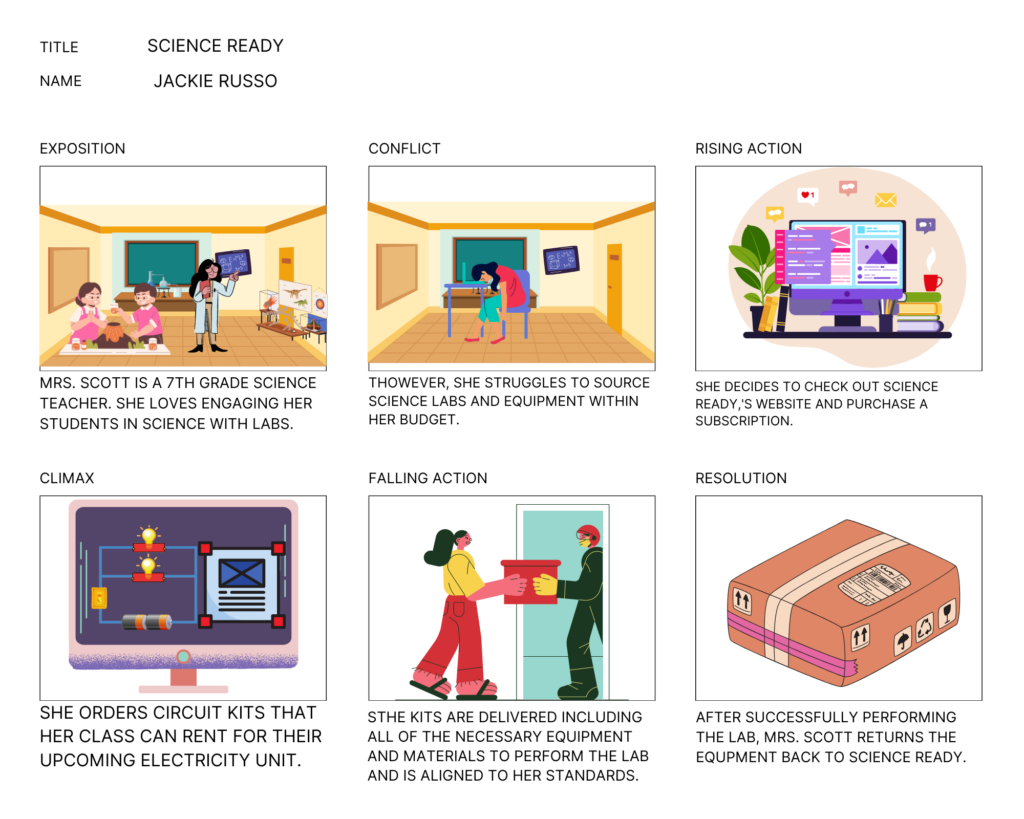
Test and Testing Process Outline
The test stage of the design thinking process involves testing the prototype with users to identify any areas for improvement. If this venture were to receive funding to be further developed, the testing process outlined below would be initiated. This process would involve testing the platform with a partnering school to identify any areas where the platform could be improved. Feedback from these stakeholders would be used to refine and improve the platform before it is rolled out on a larger scale. Additionally, data analytics would be used to track student progress and identify areas for further improvement. The testing process would ensure that the platform is effective in providing its value propositions of being a cost-reduction solution and improving student academic performance.
